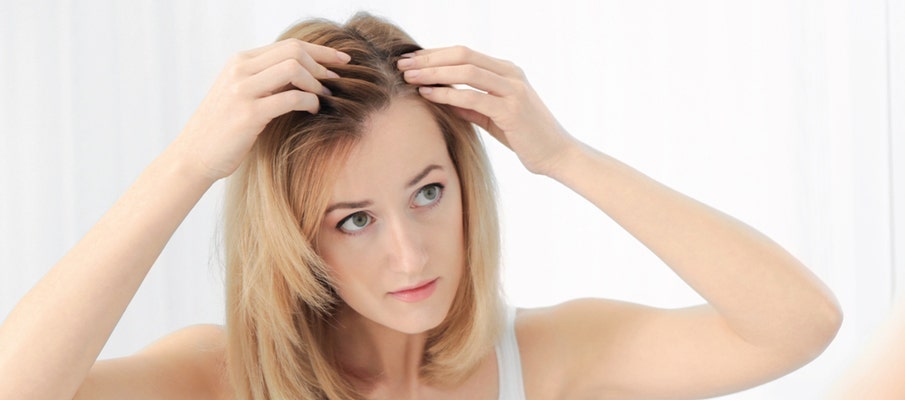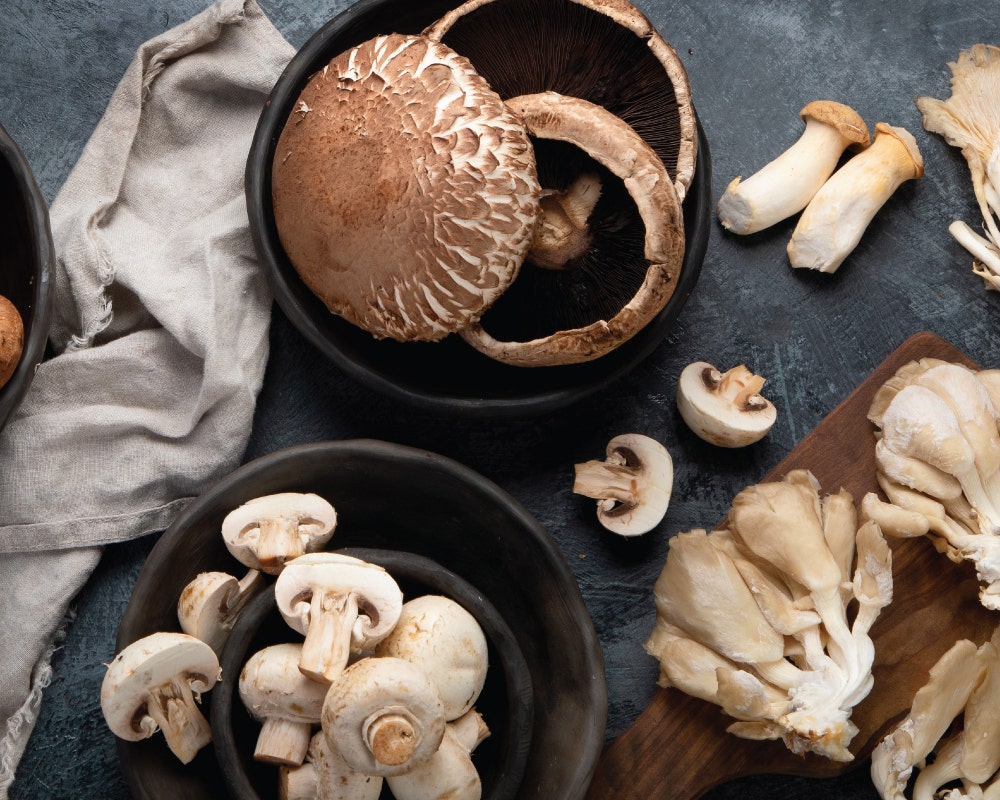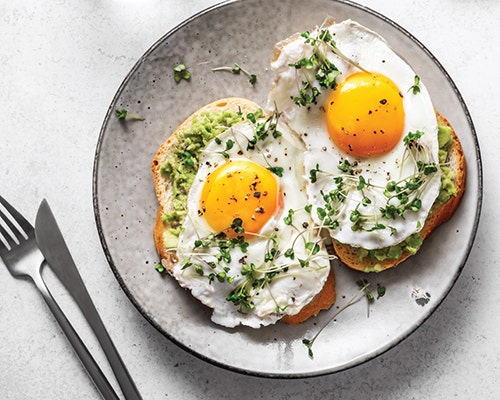Why Does Menopause Cause Hair Loss?
- 11/8/23


Menopause is often associated with symptoms like hot flashes and trouble sleeping. But for many women, this transitional season of life also goes hand in hand with unwanted hair loss. If you’re having hair loss during menopause, know that you’re not alone. Understanding the possible causes can help you prevent or minimize it.
Menopause and Hair Growth
Menopause generally begins around age 50, diagnosed after being without a period for at least 12 months. The several years leading up to menopause are called perimenopause, when hormonal changes begin, and then postmenopause encompasses the rest of your life.
Hair loss can begin during perimenopause and last many years into postmenopause. This can be frustrating, especially when it becomes more noticeable.
Just as with other menopause symptoms, hair loss is triggered by hormone fluctuations. Estrogen and progesterone levels start to decline during perimenopause, which can lead to thinning hair and slower hair growth.
When estrogen and progesterone go down, this also leads to an increase in testosterone. Higher amounts of testosterone can cause hair follicles to get smaller, producing less hair and triggering more shedding.
Furthermore, while some women experience hair loss on the head, more hair may start to grow on the face. Overall, the normal hair growth process is disrupted when women begin to go through hormonal changes related to menopause.
Coping Strategies and Management
Hair loss can be frustrating and may make you feel self-conscious. Remember that you’re not alone. Even though your hair may not be the same as it was before, there are things you can do to help protect it and prevent it from worsening.
Healthier Eating
A balanced diet rich in nutrients is essential for healthy hair growth and maintenance. In times when hair loss is stunted and hormones are out of whack, nutrition becomes even more important. It’s not uncommon for women experiencing menopause hair loss to be falling short in their nutrient needs.
Incorporate the following nutrients in your diet regularly:
- Vitamin A, in carrots, mangos, organ meats, sweet potatoes, and leafy greens
- B Vitamins, in legumes, eggs, leafy greens, and poultry
- Vitamin C, in fruits and vegetables
- Vitamin D, found in fortified milk and juice, UV-treated mushrooms,
- Omega-3 Fats, found in salmon, tuna, halibut, or algae oil
- Protein, in foods like lean poultry, seafood, beans, peas, lentils, nuts, and soy
- Minerals, like zinc, selenium, iron, copper, and calcium, in whole grains, yogurt, leafy greens, soy, nuts and seeds, and starchy vegetables
You might consider adding certain supplements to your health routine that can also support your hair health. For example, Garden of Life Menopause + Hair Growth† supplement contains hair-supportive ingredients like Keranat Oil, Trans-resveratrol, and S-Equol.
Hydration
When hair is dry and dehydrated, it may be more likely to break and fall apart. Keep a full water bottle with you to sip throughout the day. If plain water gets boring, try adding fresh lemon wedges or seltzer water instead.
Stress Management
Stress is a common cause of hair loss, which can be amplified when hormones are imbalanced. Prioritize stress management practices, like journaling, meditation, yoga, and regular exercise.
Hair Care
To help limit the impact of hair loss, consider adjusting your hair care routine. When in doubt, go the gentle hair care route. Don’t tease your hair. Avoid heated styling tools that can cause further damage to delicate hair, such as hot blow dryers, curling irons, and straighteners.
Swap harsh shampoos for hair-strengthening ones and use regular conditioning treatments. Avoid coloring or bleaching your hair. Talk to your hairstylist for gentle hair care advice.
Medical and Alternative Interventions
If you’re concerned about menopausal hair loss, speak with your healthcare provider. Additional interventions may be helpful. These might include referrals to specialists or prescription medications, procedures, and topical treatments. You may also try alternative treatments like:
- Light therapy, which may trigger the growth of new hair follicles
- Microneedling, which triggers an immune response that may promote hair growth
The Takeaway
Menopause can be challenging enough without hair loss. If you’re experiencing menopausal hair loss, or are trying to prevent it, consider the ideas above. But most importantly, embrace the changes in your body as much as possible, and don’t be afraid to pursue support and solutions.
References
-
Peacock K, Ketvertis KM. Menopause. [Updated 2022 Aug 11]. In: StatPearls [Internet]. Treasure Island (FL): StatPearls Publishing; 2023 Jan-. Available from: https://www.ncbi.nlm.nih.gov/books/NBK507826/
-
Zouboulis CC, Blume-Peytavi U, Kosmadaki M, et al. Skin, hair and beyond: the impact of menopause. Climacteric. 2022;25(5):434-442. doi:10.1080/13697137.2022.2050206
-
Grymowicz M, Rudnicka E, Podfigurna A, et al. Hormonal Effects on Hair Follicles. Int J Mol Sci. 2020;21(15):5342. Published 2020 Jul 28. doi:10.3390/ijms21155342
-
Zouboulis CC, Blume-Peytavi U, Kosmadaki M, et al. Skin, hair and beyond: the impact of menopause. Climacteric. 2022;25(5):434-442. doi:10.1080/13697137.2022.2050206
-
Goluch-Koniuszy ZS. Nutrition of women with hair loss problem during the period of menopause. Prz Menopauzalny. 2016;15(1):56-61. doi:10.5114/pm.2016.58776
-
Thom E. Stress and the Hair Growth Cycle: Cortisol-Induced Hair Growth Disruption. J Drugs Dermatol. 2016;15(8):1001-1004.
-
Jia L, Xiong J, Guo R, Li Y, Jiang H. A Comprehensive Review of Microneedling as a Potential Treatment Option for Androgenetic Alopecia. Aesthetic Plast Surg. 2022;46(6):2979-2994. doi:10.1007/s00266-022-03042-y
-
Iamsumang W, Leerunyakul K, Suchonwanit P. Finasteride and Its Potential for the Treatment of Female Pattern Hair Loss: Evidence to Date. Drug Des Devel Ther. 2020;14:951-959. Published 2020 Mar 2. doi:10.2147/DDDT.S240615
-
Burns LJ, De Souza B, Flynn E, Hagigeorges D, Senna MM. Spironolactone for treatment of female pattern hair loss. J Am Acad Dermatol. 2020;83(1):276-278. doi:10.1016/j.jaad.2020.03.087
-
Blume-Peytavi U, Shapiro J, Messenger AG, et al. Efficacy and Safety of Once-Daily Minoxidil Foam 5% Versus Twice-Daily Minoxidil Solution 2% in Female Pattern Hair Loss: A Phase III, Randomized, Investigator-Blinded Study. J Drugs Dermatol. 2016;15(7):883-889.





